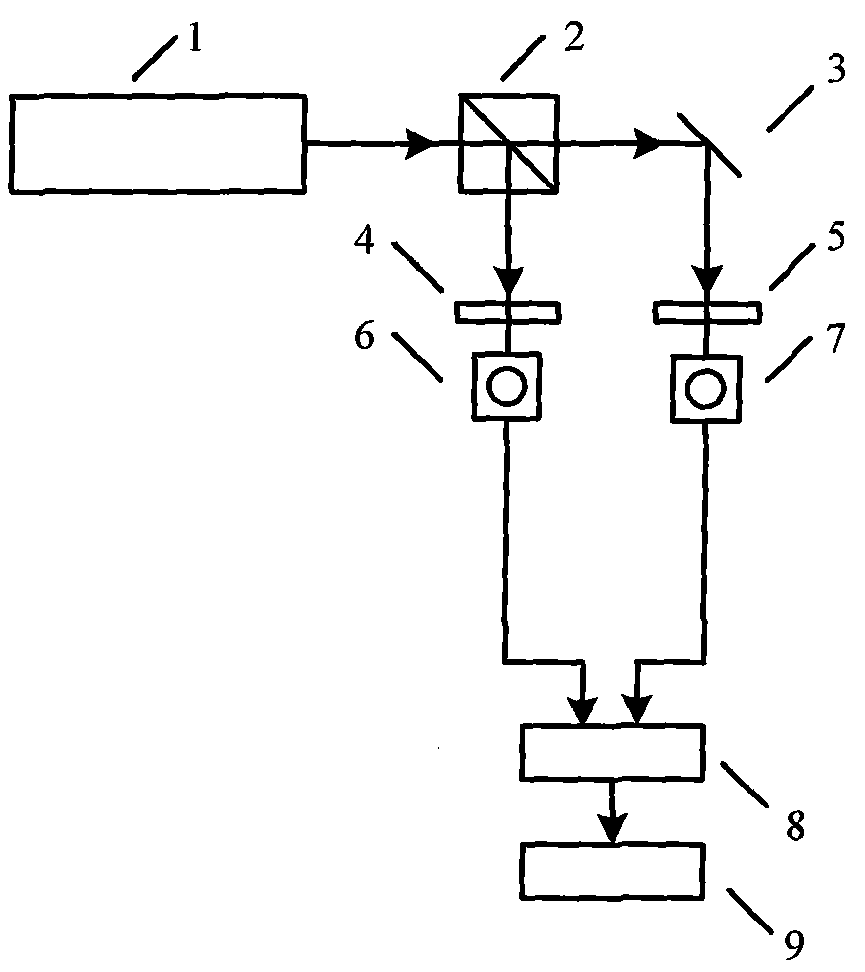Photoelectric receiver time stability test method based on non-polarized beam splitting of dual-frequency laser
A photoelectric receiver and stability testing technology, applied in the field of laser applications, can solve problems such as inaccuracy, affecting the stability of the working time of the heterodyne interference system, and the influence of the time stability of the photoelectric receiver, to achieve accurate measurement results
- Summary
- Abstract
- Description
- Claims
- Application Information
AI Technical Summary
Problems solved by technology
Method used
Image
Examples
Embodiment Construction
[0020] The examples of the present invention will be described in detail below in conjunction with the accompanying drawings.
[0021] A method for testing the time stability of a photoelectric receiver based on dual-frequency laser unbiased light splitting, the steps of the method are as follows:
[0022] (1) Dual-frequency laser 1 emits a beam of dual-frequency laser, including 1 and v 2 , the polarization directions are mutually orthogonal linearly polarized light in the horizontal direction and the vertical direction respectively, the dual-frequency laser beam is divided into a reference beam a and a measurement beam b after passing through the unpolarized beam splitter 2, and the reference beam a and the measurement beam b both contain the frequency v 1 and frequency v 2 The orthogonal linearly polarized light;
[0023] (2) The reference beam a propagates to the analyzer a4, and the polarization direction of the analyzer a4 forms an angle of 45° with the horizontal di...
PUM
 Login to View More
Login to View More Abstract
Description
Claims
Application Information
 Login to View More
Login to View More - Generate Ideas
- Intellectual Property
- Life Sciences
- Materials
- Tech Scout
- Unparalleled Data Quality
- Higher Quality Content
- 60% Fewer Hallucinations
Browse by: Latest US Patents, China's latest patents, Technical Efficacy Thesaurus, Application Domain, Technology Topic, Popular Technical Reports.
© 2025 PatSnap. All rights reserved.Legal|Privacy policy|Modern Slavery Act Transparency Statement|Sitemap|About US| Contact US: help@patsnap.com

